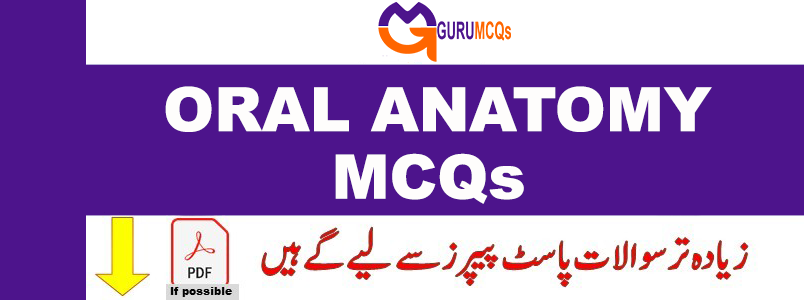
Gurumcqs.com offers a comprehensive collection of 2000+ basic and advanced oral anatomy MCQs, complete with answers and detailed explanations. This section is dedicated to covering all essential aspects of the oral anatomy subject, focusing on key topics related to the anatomy of the mouth and teeth. These include Basic Oral Anatomy, Calcification and Eruption of Teeth, Deciduous Dentition, Occlusion, Permanent Dentition, Physiologic Form of Tooth and Periodontium, Osseous Structures, TMJ, and more. The questions are carefully selected from reputable reference books on oral anatomy. These dental anatomy MCQs are valuable for interview preparation, entrance examinations, competitive exams, and certifications, catering to individuals with varying levels of experience, whether they are seasoned professionals, freshers, or students. Additionally, you can explore MCQs on medical topics on the platform.
161. No. of cusps in mandibular 1st molar_____________?
A. 4
B. 3
C. 5
D. 6
162. Longest tooth of the maxillary arch is_____________?
A. Permanent incisor
B. First premolar
C. Permanent canine
D. Decidous incisor
163. The largest permanent tooth in the mouth usually is_____________?
A. Maxillary canine
B. Mandibular canine
C. Mandibular first molar
D. Maxillary first molar
164. Difference between mandibular and maxillary premolars is that in the mandibular premolars ?
A. The buccal and lingual cusps are more prominent
B. The lingual cusp is sharper and longer
C. The lingual surface rounded and less developed
D. The buccal surface is rounded and less developed
165. Mesiolingual grooves may be found on which of the following permanent teeth ______________?
A. Mandibular second molars
B. Mandibular first premolars
C. Maxillary first molars
D. Maxillary canines
166. Which of the following features of a permanent maxillary lateral incisor aids in distinguishing it from a mandibular lateral incisor ?
A. Flattened root
B. More pronounced lingual fossa
C. Thinner incisal ridge
D. Sharper proximal incisal angles
167. The total number of cingula in each dentition is_______________?
A. 6
B. 12
C. 24
D. 32
168. A maxillary right canine may be distinguished from a maxillary left canine because ____________?
A. The root curves to mesial in the apical 1/3rd
B. The distal half of canine shows more convexity than the mesical half
C. Facially the cusp tip is placed distal to Bisecting line
D. Lingually the cervical line slopes mesially
169. Number of roots in maxillary 2nd molar is_______________?
A. 2
B. 3
C. 4
D. 5
170. The permanent anterior tooth, which is most 20. Commonly atypical , is_____________?
A. Maxillary central incisor
B. Maxillary lateral incisor
C. Mandibular central incisor
D. Mandibular 1st premolar

Pingback: Oral Pathology MCQs with Answers for Exam Preparation - GURU MCQS